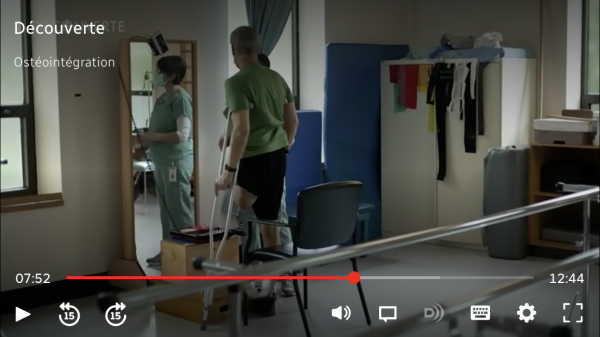The Bone Anchoring Device for Artificial Limbs (BADAL X™) is a modular medical device to be used as a permanent transcutaneous (through the skin) fixation system to directly connect an exoprosthetic lower limb (artificial leg) to the upper- and/or lower leg bone in respectively above- and below knee amputees. The BADAL X attachment method is also known as osseointegration and is an alternative for the conventional attachment of artificial limbs with a stump socket.
BADAL X on Polish television
Watch the video here (in Polisch)
BADAL X on Canadian television.
Watch the video here (in Canadian French)
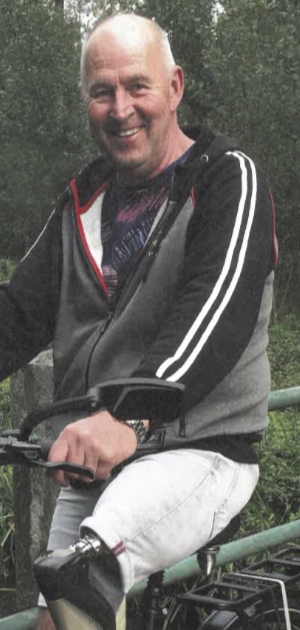 “Iedereen zou deze kans moeten krijgen.”
“Iedereen zou deze kans moeten krijgen.”
Eind mei kreeg Thieu Rijnders een klikprothese bij de nieuwe AOFE Clinics. In het vorige artikel kon u lezen over de eerste periode na de operatie. In dit artikel, ook uit ‘KorterMaarKrachtig’: de revalidatie. Hierover zegt Thieu: ‘Het is in een pijlsnel tempo alleen maar bergopwaarts gegaan.
Read the whole article (PDF, Dutch only)
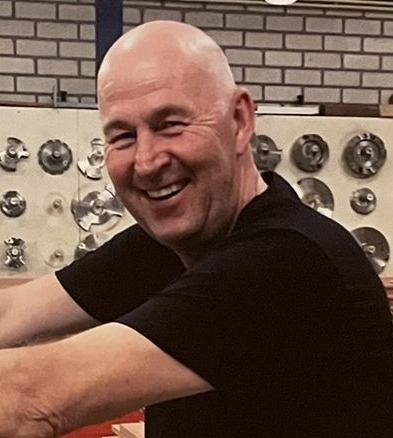 “Al snel wist ik: Ik heb mijn leven terug.”
“Al snel wist ik: Ik heb mijn leven terug.”
Hij was de allereerste die bij de nieuwe AOFE Clinics een klikprothese kreeg. Thieu Rijnders is er dolgelukkig mee en vertelt hoe het allemaal is verlopen. Kort&Krachtig!, het ledenblad van de vereniging ‘KorterMaarKrachtig’, sprak hem 5 weken na de operatie.
Read the whole article (PDF, Dutch only)
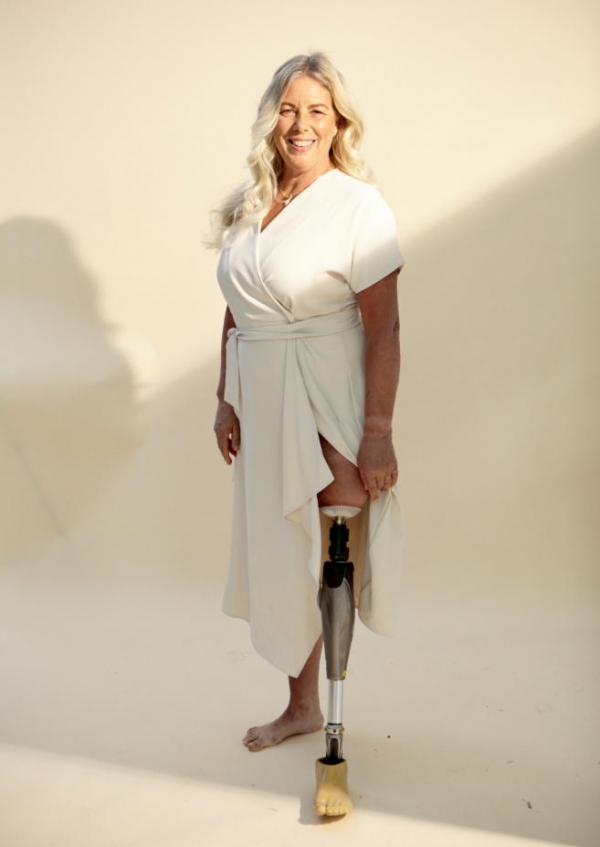 Pietsje (53) verstopte lange tijd haar prothesebeen. “Maar nu draag ik weer rokjes en korte broeken.”
Pietsje (53) verstopte lange tijd haar prothesebeen. “Maar nu draag ik weer rokjes en korte broeken.”
“Er is niks aan de hand met je knie, het zit tussen je oren, zeiden alle artsen. Tot ik in 2007 bij een professor kwam die ontdekte dat ik een agressieve tumor in mijn knie had. Mijn been moest worden geamputeerd.
Read the whole article (PDF, Dutch only)
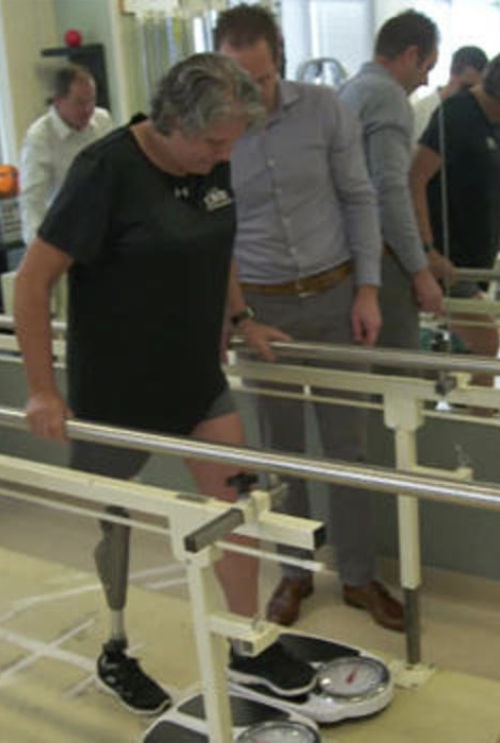 A giant step forward for users of artificial legs
A giant step forward for users of artificial legs
Every time Donna Thornburg attached her artificial leg, it was an equal measure of necessity and pain. After a car accident led to her leg amputation in 2017, she spent weekends only doing things like playing bingo. But even that hurt, because prolonged sitting twisted the leg ...
The Denver team also uses OTN Implants' BADAL X system.
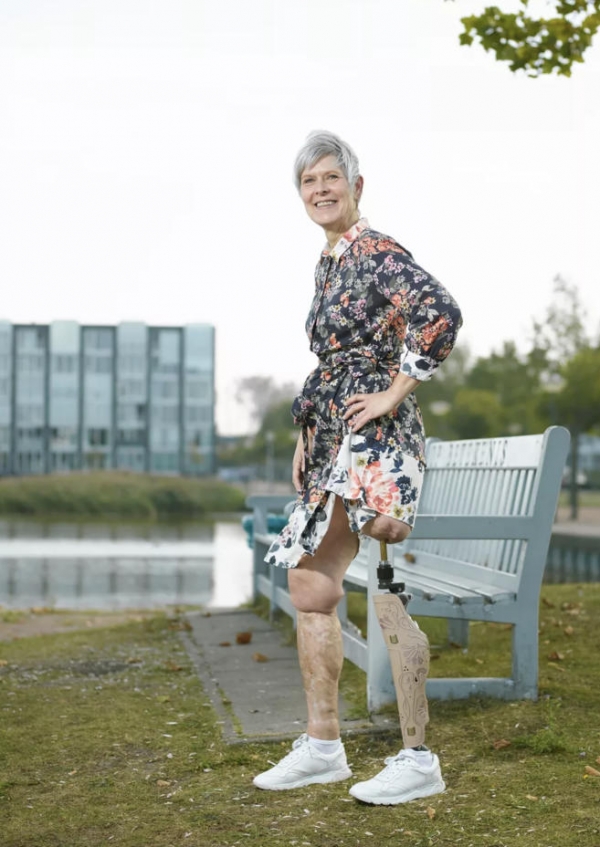 Een been dat vastzit als een huis – en nooit meer pijn
Een been dat vastzit als een huis – en nooit meer pijn
Een artikel in NRC zette Dicky de Best op het spoor van een nieuw type beenprothese. „Zoals het nu gaat, is het ook niks, zei ik tegen mezelf.”
Elf jaar geleden had het Nijmeegse Radboudumc een primeur. Voor het eerst kreeg een Nederlandse patiënt een zogeheten klikprothese aangemeten: een kunstbeen dat je via een metalen pin aan de stomp van je bovenbeen kunt klikken. De pin steekt rechtstreeks in het bot, door een opening in de huid: het stoma. Inmiddels lopen er in Nederland circa driehonderd mensen mee rond. En dat gaat heel goed, zo rapporteren Nijmeegse artsen en therapeuten begin deze maand in het Journal of Bone and Joint Surgery....
Read the whole article on NRC.nl (in Dutch only)
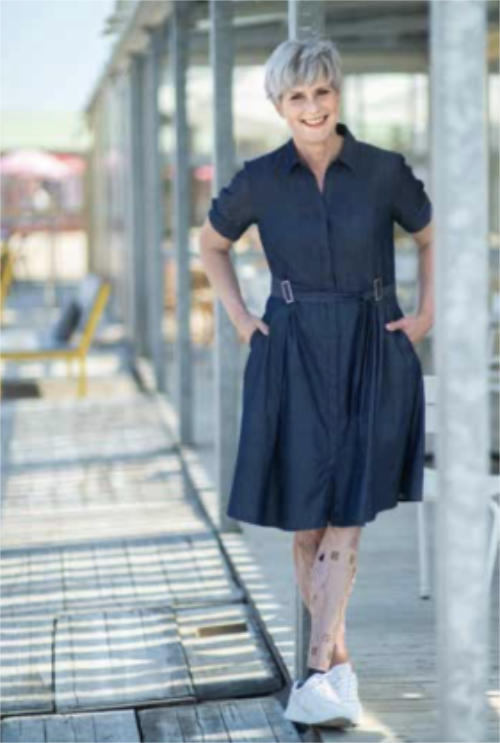 ‘Ik durf nu met mijn prothese op het podium te staan'
‘Ik durf nu met mijn prothese op het podium te staan'
Als achttienjarig meisje raakte Dicky de Best door een ongeval een been kwijt. Langzaam maar zeker kreeg ze grip op haar nieuwe leven. “Mijn schaamte werd vervangen door trots.”
“De avond ervoor stond ik nog te dansen in de disco. Geen enkel benul dat het mijn laatste danspassen zouden zijn. Het was 6 december 1984 toen ik tijdens mijn vakantiebaantje van de ene fabriekshal naar een andere overstak. Ik moest naar het toilet. Tijdens het oversteken werd ik door een vorkheftruck gegrepen...
Read the whole article (PDF, Dutch only)
 ‘It’s a New Me’: AmputeeSteps Back Into Life with Restored Limb
‘It’s a New Me’: AmputeeSteps Back Into Life with Restored Limb
Paul Nozell’s 28-year journey: From a fluke plane crash to the breakthrough at Dr. Stoneback’s Limb Restoration Program
On a soft August day in 1992, Paul Nozell and his older brother, seated next to him in a single-prop airplane, surveyed the familiar landscape below. They planned to skirt the sky above their dad’s house in upstate New York. Nozell maneuvered the plane into a “lazy 8,” something he’d done many times.
Just then, everything changed...
Click here to read the full story and watch the video
on the website of the University of Colorado


